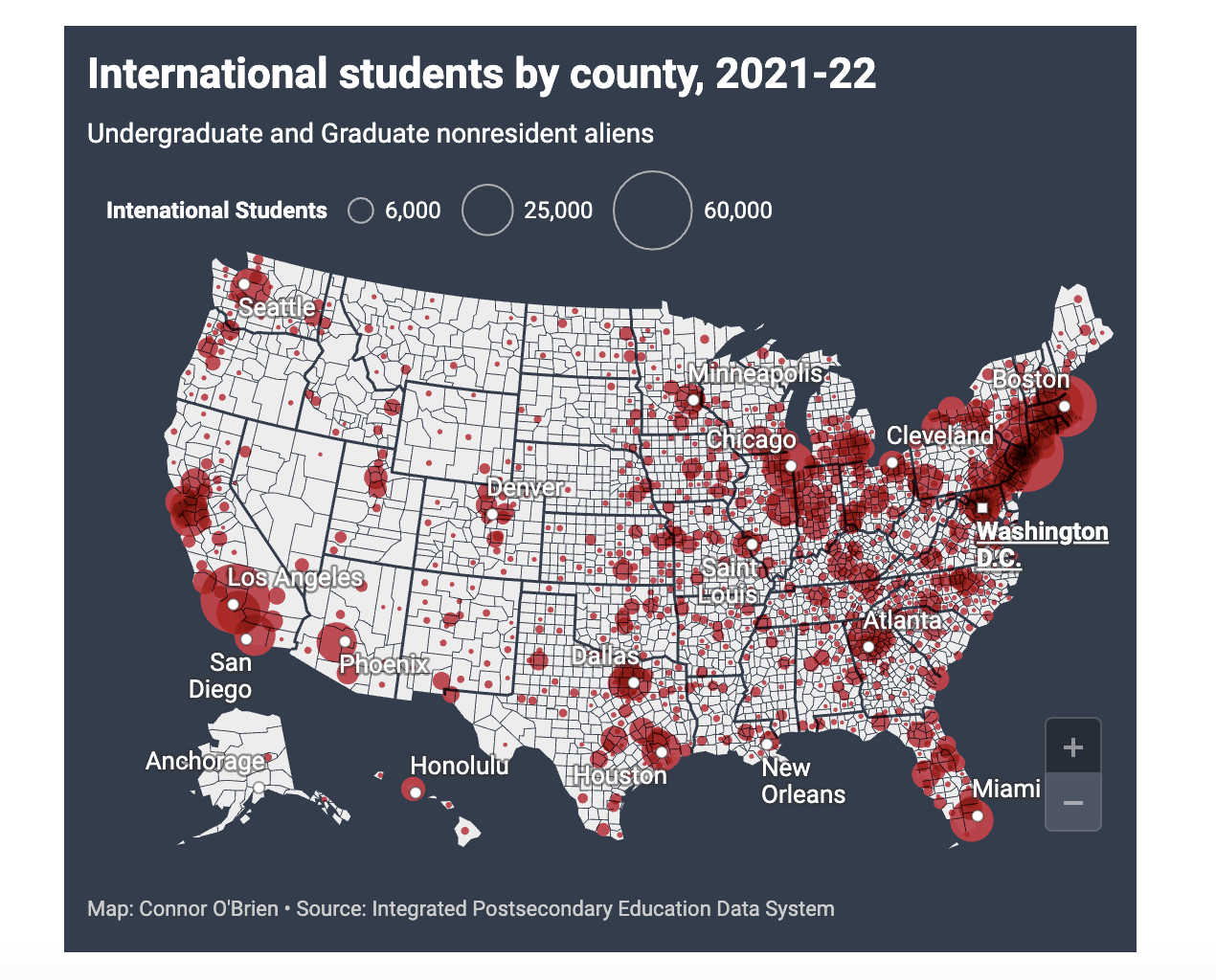
What if I told you there is a low-cost, highly effective tool for seeding new clusters of high-growth startups that your city is almost certainly ignoring?
This may be surprising, given that state and local governments spend tens of billions of dollars each year doling out economic development incentives. But these deals are largely wasteful or even outright harmful. Consider that most of this money is spent “chasing smokestacks,” attempting to lure established businesses in a zero-sum subsidy war. Very little is devoted to a far more important driver of cities’ economic fates: attracting and retaining world-class talent.
The tool I’m referring to is the Global Entrepreneur-in-Residence program, or Global EIR. Global EIR is a little-known wrinkle in the H-1B visa program that allows universities and non-profit research organizations to sponsor local entrepreneurs and avoid the annual H-1B cap.
The number of H-1B visas available to the private sector each year has been capped at 85,000 since 2006. While the national economy and the number of applicants have both grown substantially since then, our primary tool for recruiting skilled workers to the U.S. has not expanded accordingly. Randomly allocated, the H-1B looks much more like a lottery ticket with ever-dwindling odds than a rational way for a global power to attract talent.
For entrepreneurs or would-be founders, the issues with our immigration system are further compounded by the fact that the U.S. lacks a startup visa. While our universities are very open to international students, retaining them after graduation, either to work at American companies or to build their own firms here, is a growing challenge.
Global EIR is an elegant workaround of these roadblocks. Here’s how it works: universities identify and vet budding entrepreneurs, likely students on F-1 visas or recent graduates on OPT. Schools can hire part-time or accept volunteer commitments from applicants, often taking the form of student mentorship roles. Universities, as non-profits categorically exempt from the H-1B cap, serve as their sponsoring entities for the visa. So long as their company (both founders and key executives can use Global EIR) pay the applicant their relevant “prevailing wage,” they have certain access to a visa and don’t have to take their chances with the broken, clunky lottery system. Entrepreneurs then have a smoother pathway to take advantage of more permanent options to stay in the U.S. like the O-1 visa or employment-based green cards.
As the Center for Growth and Opportunity’s Josh Smith (Entry Point) notes, local leaders can do this all on their own:
A key advantage of the GEIR route is that today’s immigration rules allow the establishment of a GEIR. Universities don’t have to apply to a program or get permission from any government agencies. The only people who can say ‘no’ are the university officials who choose not to create one at their university. Unlike other immigration reforms, this one doesn’t depend on what lawmakers do in Washington DC. It’s something that universities can and should do today.
Yet sadly, Josh goes on to write, only seven—yes, seven—out of the country’s 2,500 four-year universities had a Global EIR program set up as of 2021.
Your city is almost certainly leaving free growth—and the revenue that comes with it—on the table.
The economic and fiscal benefits to setting up a Global EIR program and thereby keeping dozens or hundreds of high-potential entrepreneurs in your backyard should be obvious. We know, for instance, that the take-off of superstar cities is often highly contingent, shaped by the location decisions of one or two firms who end up being globally significant. But startup incubators, as Global EIR programs effectively are, do not need to attract the next Microsoft to fundamentally change their host community’s economic trajectory. Clusters of highly-skilled technical people, and of entrepreneurs in particular, build on themselves, attracting further investment and talent.
For universities considering setting up a Global EIR program for themselves, the hard part is in many ways already taken care of. By construction, Global EIR selects for entrepreneurs who are already raising funds, not mere hopefuls with a plan on paper.
While spinning up a Global EIR program is relatively cheap (if somewhat complicated), it’s easy to imagine how universities could turn it into a significant moneymaker, perhaps taking a small share of equity or IP in participants’ companies. For state or local governments, paying the operational costs of EIR programs run by local universities could very well be an investment that pays for itself over time.
Cities can use Washington’s dysfunction to their advantage.
While comprehensive immigration reform from Congress may be hard to imagine right now, cities frustrated by their inability to retain the students they train after graduation or spin up clusters of startups can take action now.
Between actively-enrolled international students and recent graduates on OPT, there were more than one million international students studying and working across the U.S. last year. Many thousands of these students are potential entrepreneurs. As the odds of winning the H-1B lottery continues to fall and other visa options buckle under the weight of bureaucratic delays, cities can step up with their own alternative, at least for startup founders.

Cities are not helpless in the face of a broken federal immigration system. They are not destined to sit on the sidelines bemoaning the state of national politics, or joining another bidding war for the next Foxconn boondoggle. Cities can rewrite their stale economic development playbooks for the better by refocusing on what truly drives their growth: people and their ideas. Activating the latent talents of entrepreneurs with a slate of new Global EIR programs is a great place to start.
If you liked this post, subscribe to my newsletter at regions.substack.com
